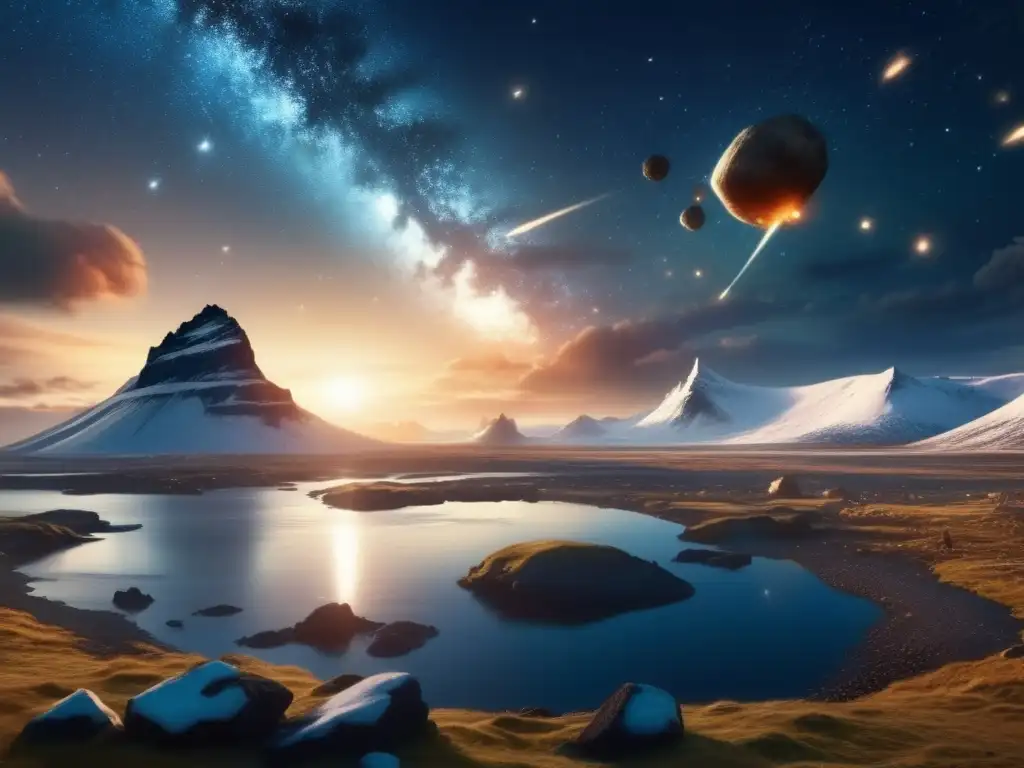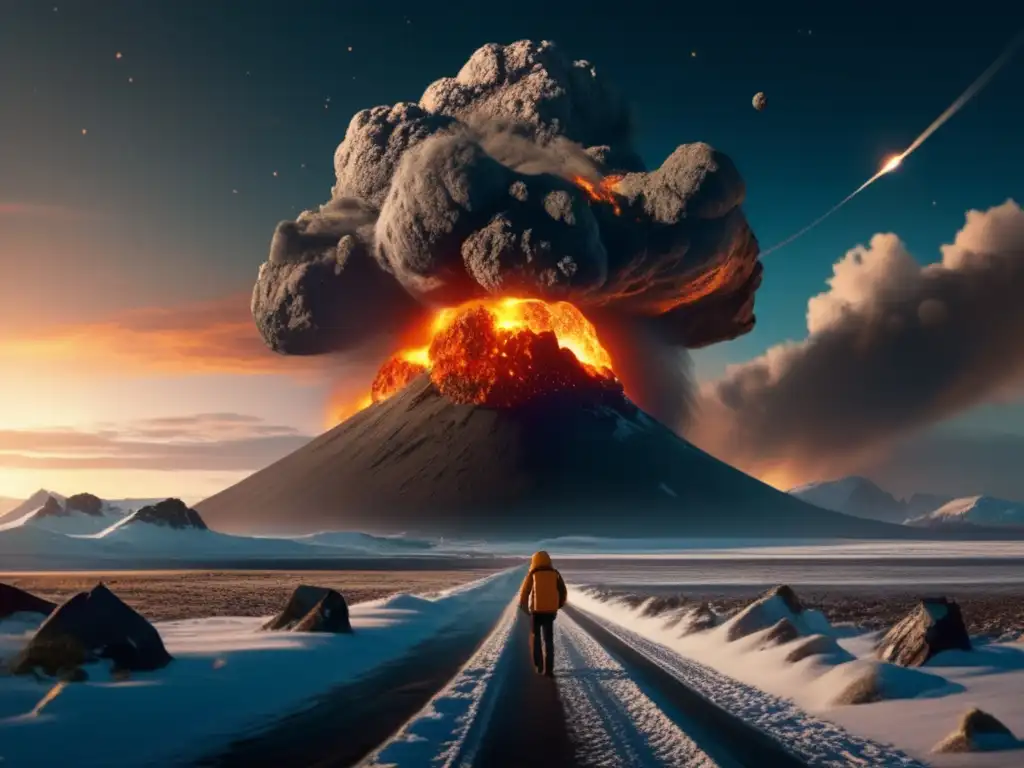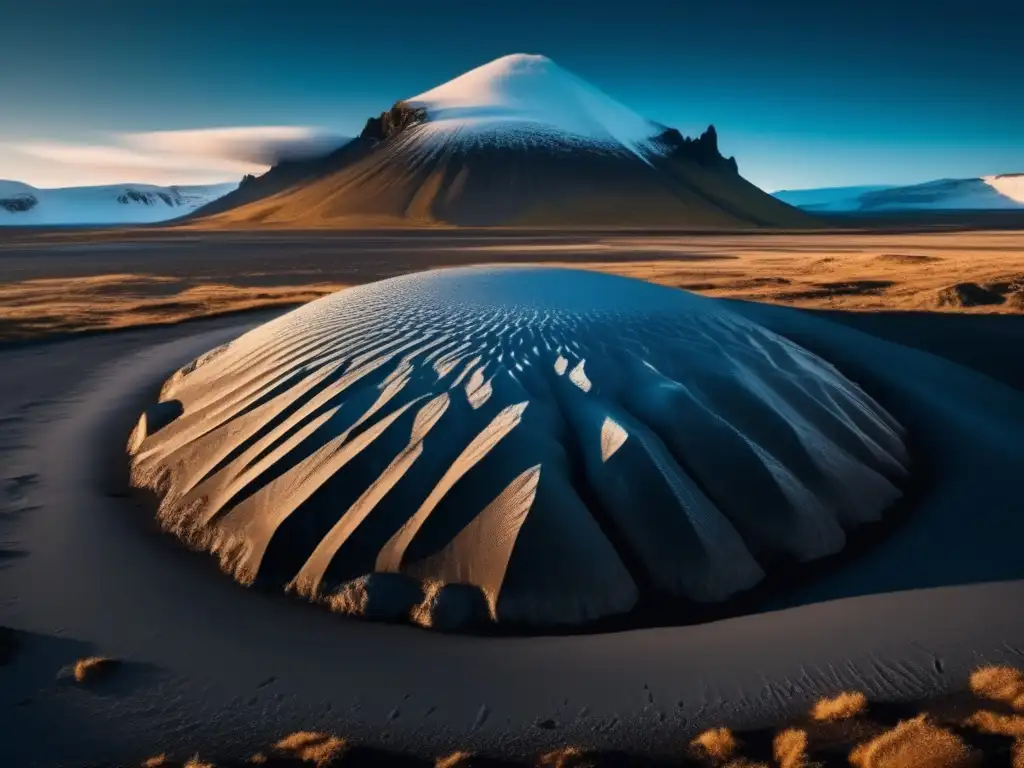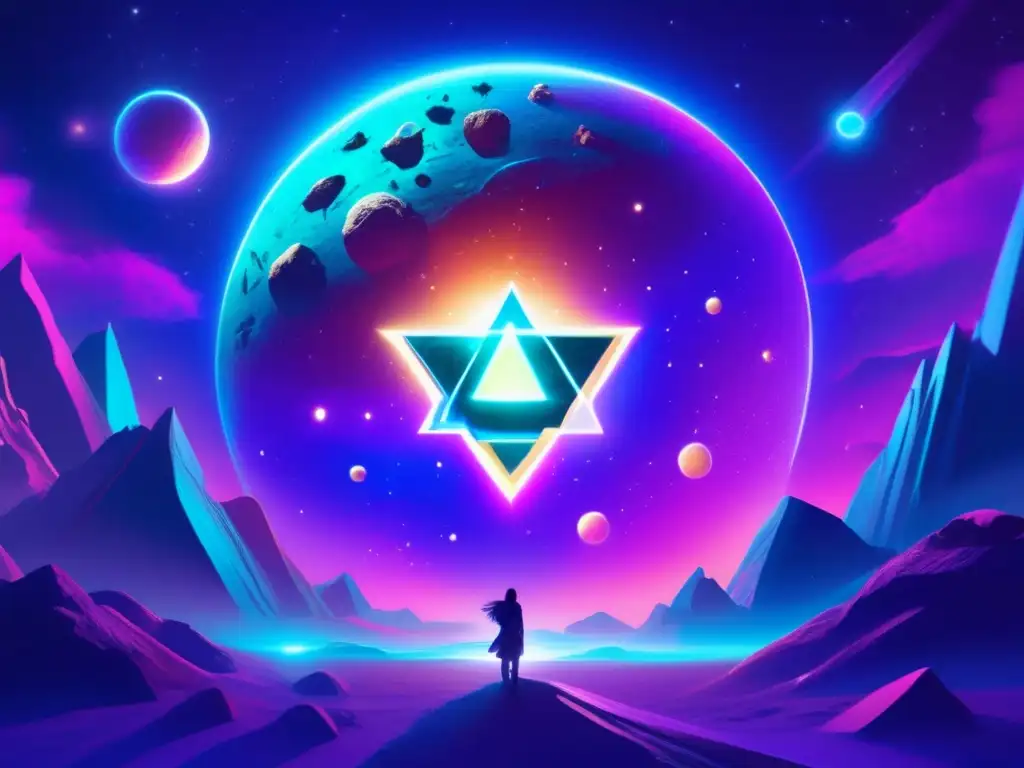Asteroids In The Sagas Of Iceland: A Study

Introduction
Asteroids have always captivated human imagination, and since the dawn of time, they have inspired various myths, legends, and stories. In Norse mythology, the sky was divided into nine realms, and one of them was Niflheim, a dark and icy place where the souls of the dead went after death. Niflheim was ruled by Hel, a goddess depicted as half-dead, half-alive, and whose name gave birth to the modern English word "hell". The Sagas of Iceland, a collection of Old Norse and Icelandic literature from the Middle Ages, feature several references to asteroids, comets, and other celestial objects.
The Ragnarok Prophecy and Falling Stars

Ragnarok and the Fimbulwinter
The Ragnarok is the Norse apocalyptic event that will end the world and all life on it. It starts with the Fimbulwinter, a three-year-long winter that covers the earth in ice and snow. During the Fimbulwinter, the sun and the moon disappear from the sky, and the stars fall and are extinguished. The Sagas of Iceland describe the Fimbulwinter as a time of great suffering and despair, where people abandoned their morals and values in favor of survival.
The Three Roosters and the Red Hen
The Sagas of Iceland mention three roosters who crow every morning in Yggdrasil, the world-tree that connects the nine realms of Norse mythology. The first rooster, Gullinkambi, wakes up the gods in Asgard, the home of the Aesir. The second rooster, identified as the "rust-red one," wakes up the giants in Jotunheim. The third rooster, located in Hel's realm of Niflheim, crows to the dead. The Sagas also feature a red hen who feeds on the leaves of Yggdrasil and produces golden eggs.
The Falling Stars as Signs of the End
In the Sagas of Iceland, the falling stars are interpreted as signs of the Ragnarok and the world's end. They are described as bright, fiery objects that fall from the sky and hit the earth, causing earthquakes and destruction. The falling stars are said to be the spirits of dead warriors, descending from the sky to join the final battle between the gods and the giants. The Sagas suggest that the falling stars mark the beginning of the end of the world and that they will be followed by other signs, such as the emergence of the monstrous wolf Fenrir.
Asteroids, Comets, and Other Celestial Objects

The Sword of the Skies
The Sagas of Iceland mention a sword called the "sword of the skies," which appears in the sky during the Ragnarok. The sword is described as shining brighter than the sun and being held by a giant. The sword represents the power of the giants and their defiance against the gods. Some scholars suggest that the sword of the skies might have been a comet or an asteroid.
The Gleaming Star and the Serpent
The Sagas of Iceland describe a celestial serpent that encircles the world-tree Yggdrasil and tries to devour it. The serpent is held back by an eagle, who sits on top of the world-tree. According to the Sagas, a gleaming star falls from the sky onto the serpent's head, blinding it and causing it to let go of the world-tree. The eagle then kills the serpent, saving the world from destruction. Some scholars suggest that the gleaming star might have been a meteorite.
The Four Dwarfs and the Sun, Moon, and Stars
The Sagas of Iceland mention four dwarfs named Austri, Vestri, Sudri, and Nordri who hold up the sky at the four corners of the world. The Sagas also describe the sun, the moon, and the stars as celestial objects that move across the sky on chariots. The sun is driven by the goddess Sol, the moon by the god Mani, and the stars by the gods Skoll and Hati.
Frequently Asked Questions

-
Were the falling stars really asteroids?
The Sagas of Iceland do not provide a definite answer, but it is possible that the falling stars were indeed asteroids or meteorites.
-
What was the sword of the skies?
The sword of the skies was a mythical weapon that appeared in the sky during the Ragnarok and might have been a comet or an asteroid.
-
What was the gleaming star that blinded the serpent?
The gleaming star might have been a meteorite that fell from the sky onto the serpent's head.
-
What were the roosters and the red hen?
The roosters and the red hen were mythical creatures that played a role in Norse mythology and the Sagas of Iceland.
-
How did the Norse interpret celestial objects?
The Norse interpreted celestial objects as gods, creatures, or omens that had an impact on human life and destiny.
Conclusion
The Sagas of Iceland offer a fascinating insight into how the Norse people imagined celestial objects such as asteroids, comets, and meteorites. As we continue to explore the universe and discover new celestial bodies, it is important to remember the myths and stories that have inspired us throughout history. By studying the mythology and cultural significance of asteroids, we can gain a deeper understanding of our place in the cosmos and appreciate the wonders that surround us.
Thank you for reading this article, and we encourage you to share your thoughts and comments below. For more exciting articles and resources about asteroids, please visit www.asteroidrealm.com.
Additional Resources

- Ragnarok - Britannica
- Yggdrasil - Wikipedia
- The Dwarfs in Norse Mythology - Norse Mythology for Smart People
 Unearthed: Ancient Asteroid Stories In Abrahamic Religions
Unearthed: Ancient Asteroid Stories In Abrahamic Religions The Sky's Will: Asteroids In Indigenous Amazonian Myths
The Sky's Will: Asteroids In Indigenous Amazonian Myths Celestial Omens: Asteroids In Zoroastrian Myths
Celestial Omens: Asteroids In Zoroastrian MythsIf you want to discover more articles similar to Asteroids In The Sagas Of Iceland: A Study, you can visit the Asteroid Mythology category.
Leave a Reply

Articulos relacionados: